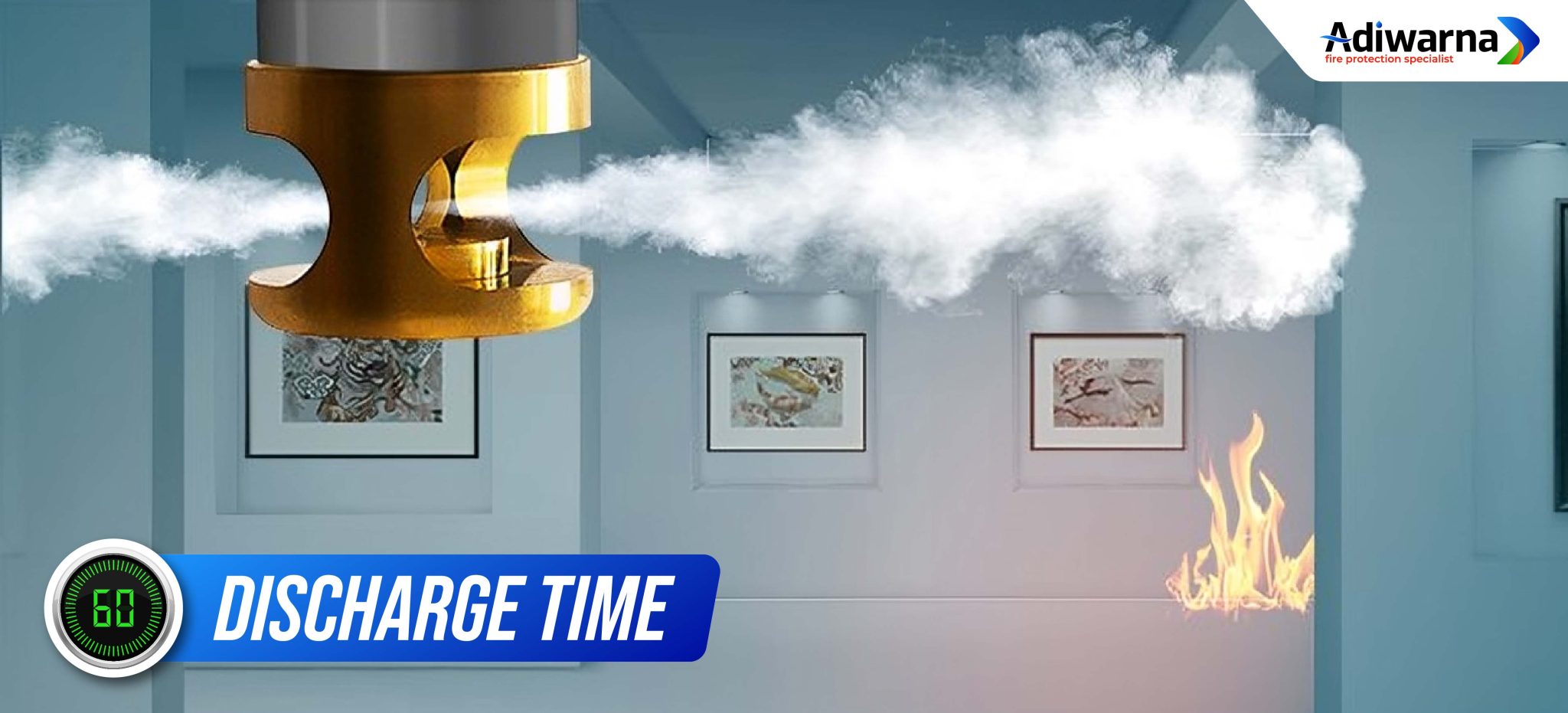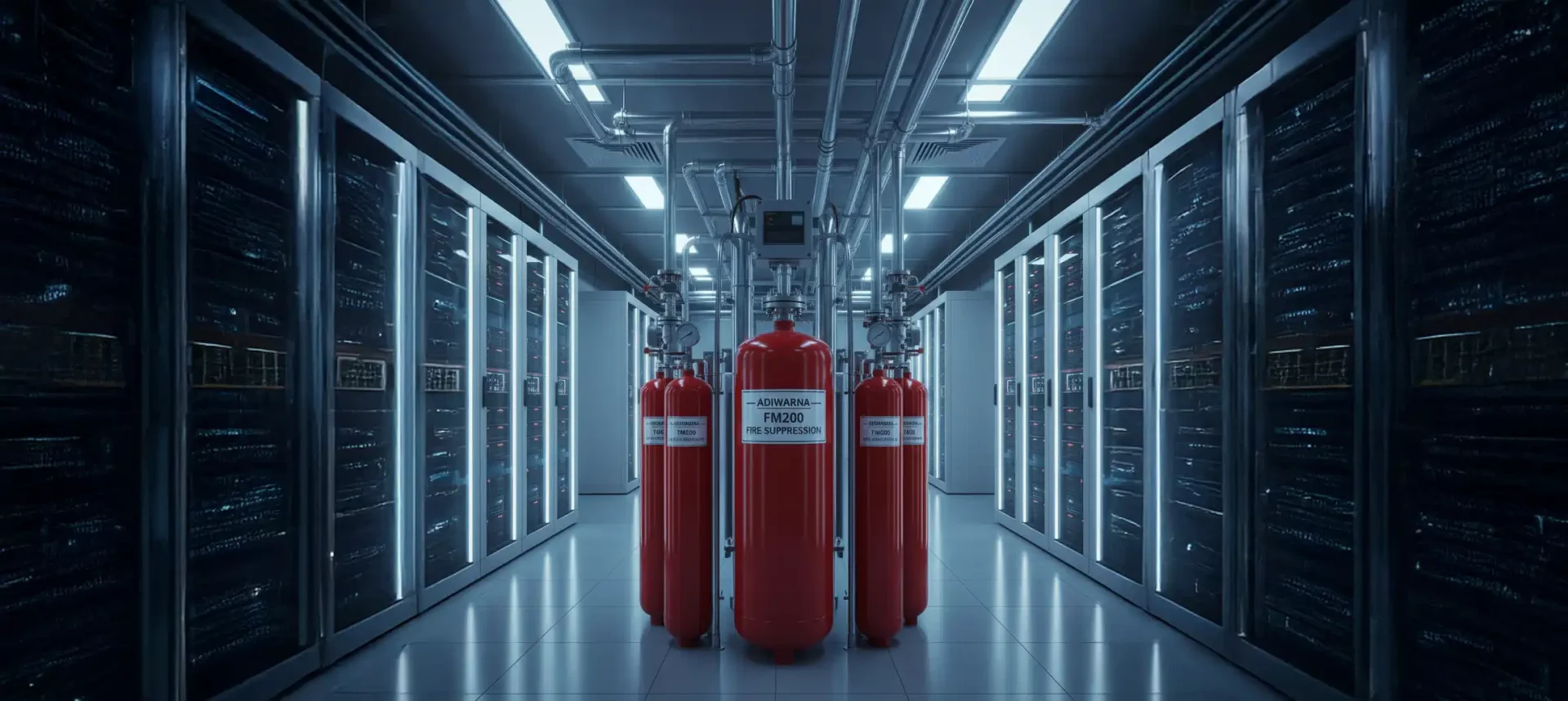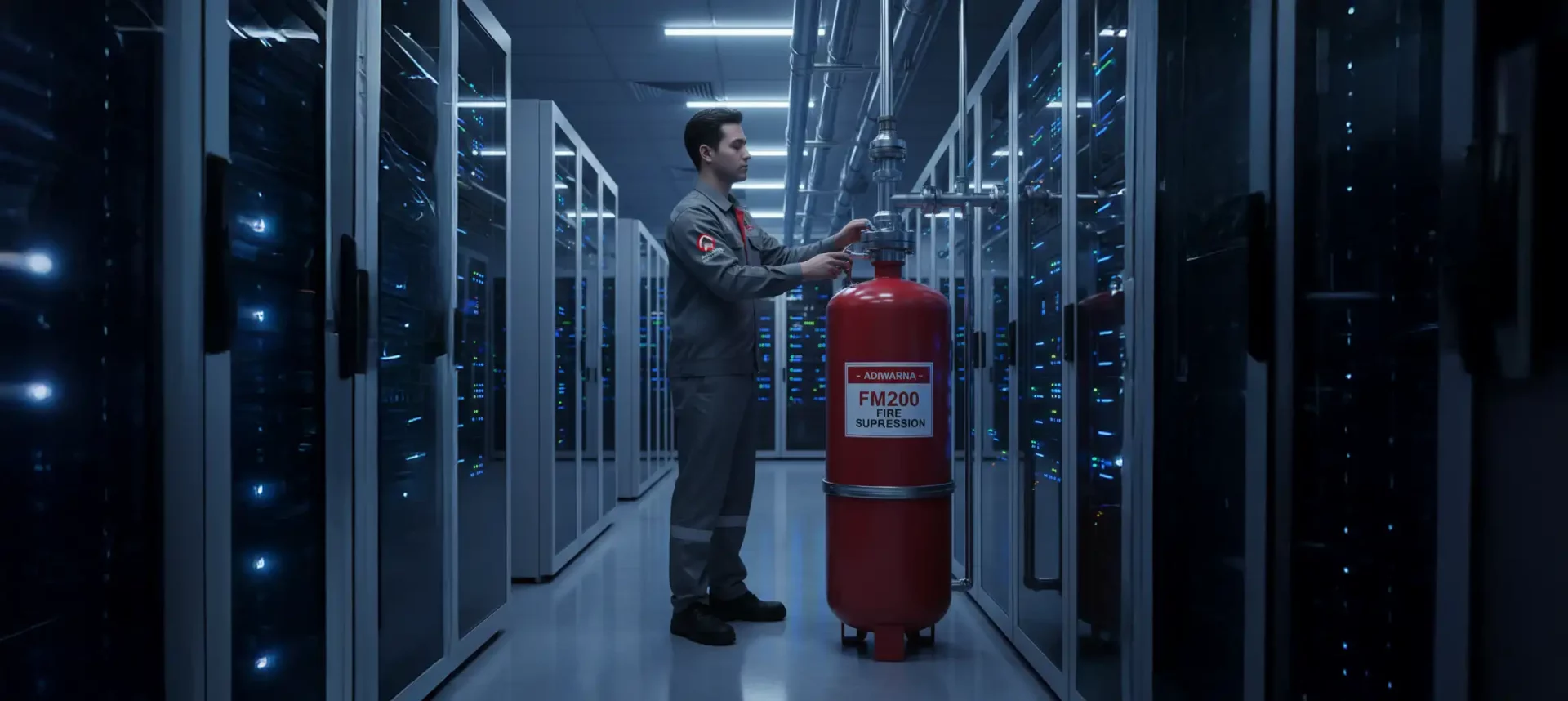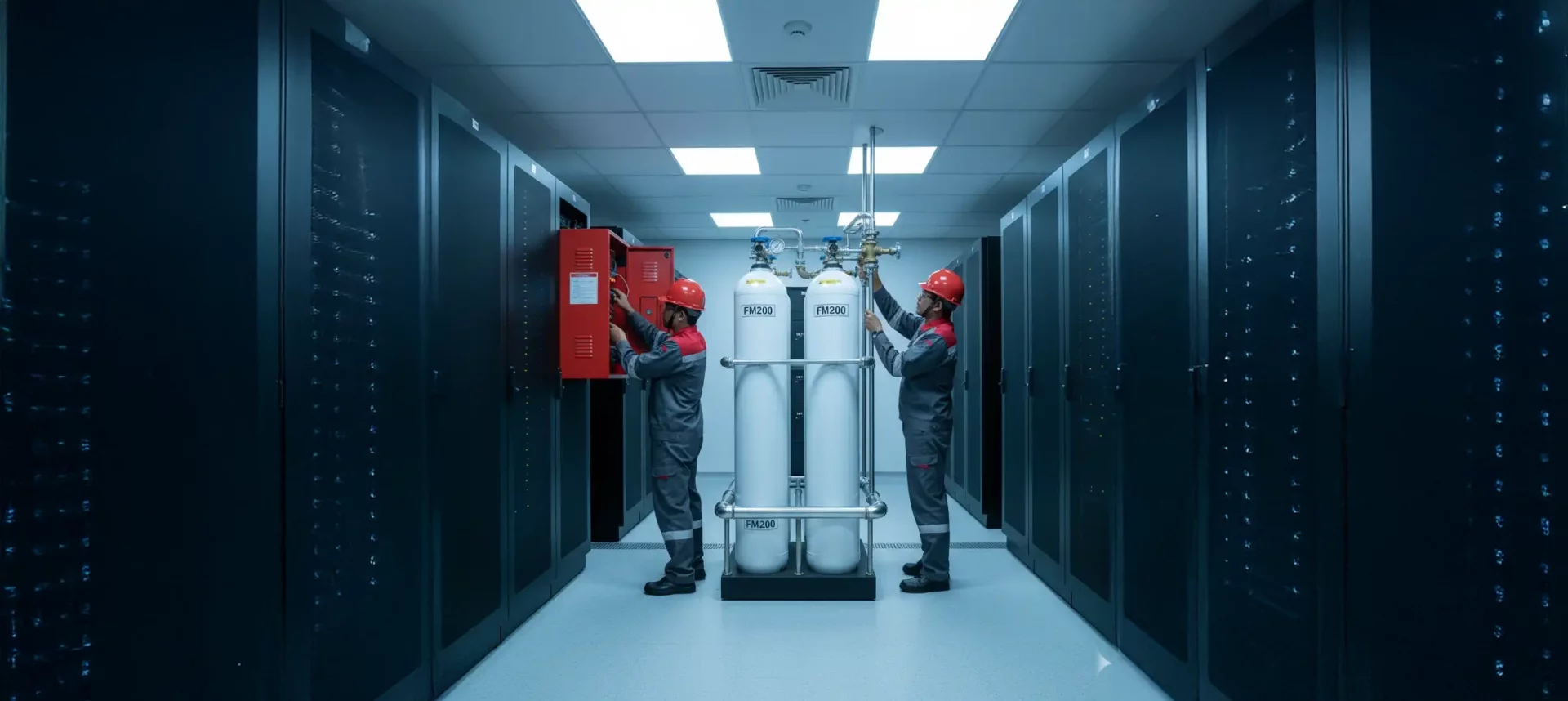Sistem pemadam kebakaran adalah sistem yang dirancang untuk mendeteksi dan memadamkan api secara otomatis maupun manual di berbagai jenis lingkungan, seperti komersial, industri, atau fasilitas kritis. Salah satu elemen penting dalam pengoperasian sistem ini adalah waktu pemadaman. Jadi, apa itu discharge time dan mengapa hal ini penting?
Definisi Discharge Time
Waktu pelepasan adalah durasi waktu yang dibutuhkan oleh media pemadam (seperti gas, cairan, atau bahan kimia lainnya) untuk dilepaskan sepenuhnya dari sistem pemadam kebakaran ke area yang dituju. Durasi ini biasanya diukur dari aktivasi sistem hingga semua media pemadam dikeluarkan dari nozel atau perangkat distribusi lainnya.
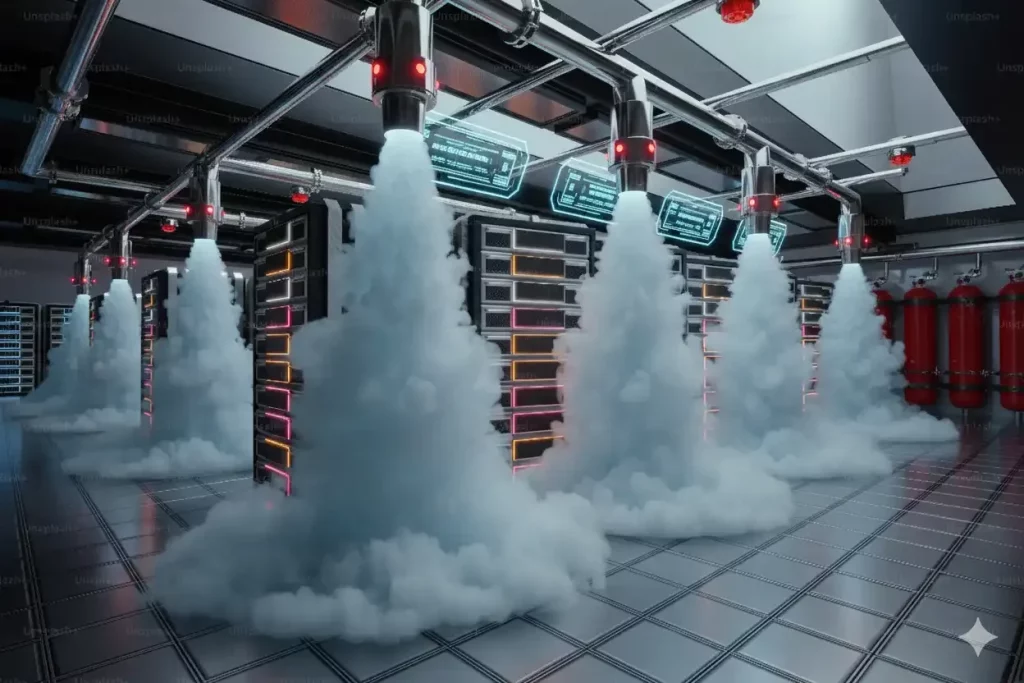
Faktor-faktor yang Mempengaruhi Waktu Pelepasan
- Jenis Media Pemadam
- Media seperti karbon dioksida (CO2), gas FM-200, atau cairan berbasis air memiliki karakteristik fisik dan mekanisme pelepasan yang berbeda.
- Media berbasis gas biasanya memiliki discharge time yang lebih cepat daripada media berbasis cairan.
- Tekanan Sistem
- Sistem dengan tekanan tinggi memungkinkan media dilepaskan lebih cepat.
- Tekanan yang tidak memadai dapat memperpanjang waktu pelepasan dan mengurangi keefektifan sistem.
- Ukuran dan Desain Area yang Dilindungi
- Area yang lebih besar atau kompleks membutuhkan waktu lebih lama untuk mendistribusikan media secara merata.
- Desain sistem yang optimal dapat meminimalkan discharge time.
- Konfigurasi Sistem
- Panjang dan diameter pipa, jumlah nozel, dan orientasi distribusi mempengaruhi aliran media pemadam.
- Panjang dan diameter pipa, jumlah nozel, dan orientasi distribusi mempengaruhi aliran media pemadam.
Pentingnya Waktu Pelepasan
- Efektivitas Pemadaman
- Discharge time yang terlalu lambat dapat meningkatkan risiko penyebaran api sebelum media pemadam berhasil menjangkau seluruh area.
- Waktu pemadaman yang terstandardisasi memastikan bahwa api dapat dipadamkan dengan cepat sebelum menyebabkan kerusakan lebih lanjut.
- Kepatuhan terhadap Standar
- Banyak standar internasional seperti NFPA (National Fire Protection Association) menetapkan batas maksimum waktu pemadaman.
- Kepatuhan terhadap standar ini merupakan bagian dari memastikan keselamatan penghuni dan perlindungan aset.
- Efek pada Sistem Ventilasi dan Lingkungan
- Waktu pengosongan juga mempengaruhi interaksi antara media pemadam dan ventilasi di kawasan lindung. Pengosongan yang terlalu cepat atau terlambat dapat mengurangi efektivitas pemadaman.
Contoh Standar Discharge Time
- Definisi dan Faktor yang Mempengaruhi Discharge Time:Discharge time adalah durasi pelepasan media pemadam. Beberapa faktor mempengaruhinya, termasuk jenis media (gas vs. cair), tekanan sistem, ukuran dan desain area, serta konfigurasi sistem (pipa, nozel).
- Pentingnya Discharge Time: Waktu pelepasan yang tepat krusial untuk efektivitas pemadaman api secara cepat, memastikan kepatuhan terhadap standar keselamatan seperti NFPA, dan memengaruhi interaksi antara media pemadam dan sistem ventilasi.
- Contoh Standar Waktu Pengosongan: Standar waktu pengosongan bervariasi berdasarkan jenis sistem, contohnya sistem gas inert (60-120 detik), sistem FM-200 (<10 detik), dan sistem busa pada kendaraan tambang (50 detik dengan laju pelepasan minimum).

